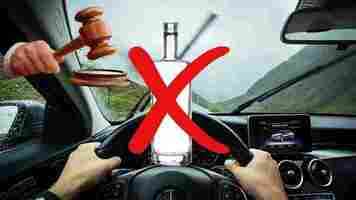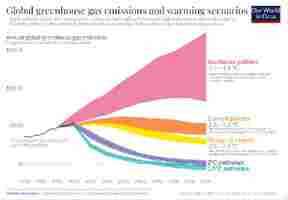US wants to stop drunk driving with tech… any tech at all
Every 52 minutes , someone in the US dies in a drunk-driving accident… According to the National Highway Traffic Safety Administration (NHTSA), each year, around 10,000 people are killed due to alcohol-related crashes, which translates into nearly 30% of all traffic fatalities.

Despite the laws, fines, and penalties that exist to prevent drunk driving, people still get behind the wheel after consuming alcoholic beverages. And if we can’t stop them from making this irresponsible choice, maybe we can stop them from driving altogether.
That’s what the Congress is trying to do as part of the $1 trillion bipartisan infrastructure bill, which includes a mandate for anti-drunk driving technology in new cars.
On Tuesday, the Infrastructure Investment and Jobs Act passed Congress with the measure intact, AP reports, and it’s expected to be signed by President Biden soon.
Basically, the legislation mandates carmakers to include technology that detects and stops drunk drivers by as early as 2026.
For now, the bill isn’t very specific and requires something that will “ passively monitor the performance of a driver of a motor vehicle to accurately identify whether that driver may be impaired.”
The Department of Transportation will have to determine which kind of technological solution would be the most suitable, and based on that decision automakers will have to follow suit.
Currently, some convicted drunk drivers are required to blow into a breathalyzer tube attached to the ignition interlock. If their blood alcohol level is found too high, the car won’t start.
Naturally, a breathalyzer wouldn’t be an option automakers could scale. I mean, who would want to blow into a tube every time they start their car?
But there’s a significant number of programs and companies that are already focusing on anti-drunk driving tech, or whose existing technology could be used in that direction.
One promising technology on the horizon is the Driver Alcohol Detection System for Safety (DADSS) Program . It’s being co-developed since 2008 by the NHTSA and the Automotive Coalition for Traffic Safety (ACTS), which includes 16 major automakers.
The tech will automatically detect when a driver is intoxicated with a blood alcohol concentration (BAC) at or above 0.08% — the legal limit — and prevent the car from moving.
This is accomplished in two ways: a breath system and a touch system.
In the first case, the breathalyzer runs the driver’s breath through an infrared light beam to calculate their BAC. In the second, the technology measures alcohol levels under the skin’s surface, when drivers place their fingertips on control buttons or the steering wheel.
Likewise, Nissan has created a drunk-driver prevention concept car able to detect the smell of alcohol, which also uses cameras to observe driving impairment.
In fact, the infrared cameras many carmakers like GM and BMW are using for their semi-automated driver assistance systems to track driver inattentiveness could also look for signs of drowsiness or loss of consciousness.
Of course, developing existing smart technology to accurately detect intoxication won’t come easy or immediately. And even when it happens, drivers of older cars would still go undetected.
The bill’s mandate is undoubtedly an important start, but perhaps the US should consider implementing some alternative temporary measures in the meantime, given the seriousness of the matter. We’re four years away from 2026 and, based on NHTSA’s averages, 40,000 lives more will have been lost by then.
Updated on November 12, 2021: Added videos
Supersonic flights are making a comeback — and you still won’t be able to afford them
United Airlines has announced it will purchase up to 50 Boom Overture supersonic jets for commercial use by 2029, heralding the return of supersonic passenger flights nearly 20 years after the Concorde was decommissioned .

Supersonic planes halve the time it takes to fly from New York to London, from seven hours down to 3.5 hours, but such airliners were abandoned following Concorde’s final flight in 2003. Concorde had become financially unworkable after a high-profile crash in 2000, combined with excessive ticket prices, high fuel consumption, and increasingly high maintenance costs.
If Boom’s supersonic aircraft is to succeed, it will depend on overcoming these issues that derailed Concorde. So can it be done?
Breaking the sound barrier
Supersonic flights are so called because they travel faster than the speed of sound . To do this, the aircraft must break through the sound barrier, which requires an efficient aerodynamic design to reduce drag, and considerable thrust from powerful engines to overcome the turbulence caused by shock waves.
Breaking the sound barrier also requires engines which burn through lots of jet fuel – one of Concorde’s key drawbacks and something that’s only become more contentious in recent years. You’d therefore expect Boom, which is in the prototype stage of developing the Overture, to concentrate its designs on increasing fuel efficiency.
The Colorado-based company is likely to choose between a turbojet and turbofan engine. A turbojet produces all of its thrust from its exhaust gas when it is moving at faster speeds. A turbofan engine, meanwhile, derives most of its thrust from the amount of the air it accelerates with its fan blades. The amount of this air defines the engine’s “bypass ratio”.
Higher bypass ratio turbofan engines are more fuel efficient than turbojets. Their lower exhaust speed makes them quieter, but they tend to be larger, resulting in higher drag at supersonic speeds. This drag penalty has outweighed the efficiency of turbofans for prolonged supersonic flight in the past.
A good compromise might be a low bypass turbofan with an afterburner, which injects additional fuel to significantly increase the available thrust, and is commonly used on military jets. Such an engine was used in early production versions of another supersonic passenger jet, the Russian Tupelov Tu-144 , but was too inefficient because it needed to keep firing its afterburners to maintain supersonic cruise.
The Tu-144’s afterburner also contributed to a very noisy cabin, humming loudly at 90 decibels – roughly the sound generated by a hairdryer – which exceeds regulatory safety limits. The Concorde’s turbojets, meanwhile, only needed afterburners at take-off and to break through the sound barrier, improving its fuel economy and lowering cabin noise while supercruising.
Supersonic jet noise
Due to the noise they generate, supersonic jets aren’t allowed to fly over land. But these restrictions could be lifted with refined aerodynamic design. For example, research by Nasa on its X-59 QueSST programme hopes to produce optimized airframe shapes which could significantly reduce overland sonic booms to a much quieter “thud” – coming in at 75 decibels rather than the Concorde’s 105 decibel boom.
Getting the aerodynamics right could also open up the possibility of using modern, lightweight composite materials to enable better thrust-to-weight ratios – perhaps eliminating the need for afterburners at take-off.
Substantial developments in computational fluid dynamics software and other simulation programs since the 1970s will be crucial in evaluating these designs and getting them certified to Boom’s tight production deadlines.
Sustainable aviation fuel
Boom is also promoting its aircraft’s green credentials. Part of the United deal involves collaborative development in establishing a reliable supply of sustainable aviation fuel . This will ultimately benefit other aircraft in United’s fleet and the industry at large, which currently produces around 2.8% of all global CO₂ emissions from fossil fuel combustion.
Sustainable aviation fuels include biofuels and synthetic kerosene that are manufactured using renewable and sustainable materials. An impressive 80% reduction in lifecycle CO₂ emissions is often quoted. The key word here though is “lifecycle”; it doesn’t necessarily mean less harmful emissions from the engine.
These sustainable fuels are compatible with conventional jet fuel, which means no changes to airport fueling infrastructure or engine design will be needed for them to be introduced – a critical factor in their uptake. But these fuels are very expensive, because the raw materials needed to make them aren’t available at scale. The total amount of sustainable aviation fuel currently being used amounts to just 0.1% of the total fuel spent in the air. Projections estimate this needs to reach somewhere between 1.4% and 3.7% before such fuels become economically viable.
A return to supersonic flights?
Boom will be optimistic that it can overcome fuel efficiency challenges by the time its aircraft begins carrying fare-paying passengers in 2029. Those fares look set to be high, with Boom anticipating a ~$5,000 (£3,500) price tag per seat. In 1996, British Airways charged around £5,350 – £8,800 (~$12,500) in today’s prices – for round-trip tickets from New York to London.
This means that, like Concorde before it, the Boom Overture looks aimed at the luxury market – beyond the reach of even business class passengers. It is likely to be frequented only by those who currently travel via private jet, who may be enticed by Boom’s claims to be a sustainable aircraft manufacturer.
So, while supersonic passenger jets may return to our skies by the end of the decade, the closest most of us will get to experiencing them will be when they unleash their characteristic sonic booms above our heads.
This article by Peter Thomas , Senior Lecturer in Aerospace Engineering, University of Hertfordshire , is republished from The Conversation under a Creative Commons license. Read the original article .
EVs aren’t clean if they’re charged with ‘dirty’ energy
The world has embraced the fact that EVs are happening. We have accepted that almost 1.5 billion petrol and diesel-fuelled cars will be pensioned off because of what’s under their hood. But as we stand on the cusp of a new era, the sobering reality is that simply making the switch to electric is no longer enough.

The sustainability status quo
The 1.5-degree pathway outlined in The Paris Agreement demands we halve emissions by 2030, and eliminate them altogether by 2050. This will be a challenge for any industry, but when you consider that transportation is one of the biggest polluters globally, you start to understand our uncompromising attitude.
If we’re to reach net-zero by 2050, we have to innovate and then eliminate cradle-to-gate C02e emissions. A big ask. But we’re not the only ones with an environmental to-do list.


Clean mobility needs clean energy
Electric cars are better than internal combustion engine vehicles because they offer a route to net-zero, but they are not (yet) clean. And the lesser-known factor in this carbon calculator is the type of energy used to charge them.
An EV will always have less impact than its fossil fuel counterpart. Power it with renewable energy and over its lifetime it will have half the carbon footprint of an ICE vehicle. This would be a gamechanger if new research didn’t indicate that only a very low percentage of charging stations are running on renewable energy.
Head of Sustainability at Polestar, Fredrika Klarén sees solving this as an easy win. “Given that the type of charging drastically impacts the lifetime carbon footprint of an EV, the industry needs to lead the way, guiding consumers in how they can impact this footprint when charging their EV. They should be empowered to accelerate the change.”
So, if we’re really serious about offering a sustainable alternative to fossil fuel cars, governments and energy companies need to join the movement. Putting green energy on the charging grid should be a top priority for politicians and charging station providers. Because this is where electric mobility can become clean mobility.
The Swedish example
Take a look at Sweden, and you’ll see this isn’t an impossible task. Here, one in five new cars on the road are purely electric. This becomes even more interesting when you learn they are mainly powered by fossil-free energy.
Swedish-born Klarén admits that the EV infrastructure isn’t perfect, but as a consumer, you can be fairly confident that you’re charging with renewable electricity. A significant step in the right direction.
The power of choice
The situation in Sweden is ideal because they’re not asking people to decipher the difference between Global Electricity Mix, EU Electricity Mix, and renewables. The energy almost certainly comes from renewable sources. But by being transparent about the energy they put on the grid, energy suppliers can empower consumers to make informed decisions about how they charge.
“Consumers need to be able to choose renewable energy when charging and that’s where transparency can create accountability amongst charging operators, enabling us to fully embrace this opportunity.”
There is no denying that the business case behind building charging stations is hard. However, if companies are choosing to power them with cheaper, non-renewable electricity, it defeats the purpose entirely. Governments need to provide support.
Coming clean on car-making
To unleash the full power of electric mobility, we must work together as an industry to ensure that production is clean from start to finish and that our cars can be charged by renewable sources once on the road.
As manufacturers, Polestar knows the scale of the work ahead. This is why we utilize Life Cycle Assessments (LCAs) to measure the environmental lifetime impact of our products. And why we publish the results for the world to read.
Upcoming Polestar research will also reveal that only 25% of consumers trust car companies, to be honest, highlighting the need for greater transparency. It’s clear that we need to regain trust and hold ourselves accountable to the unnegotiable environmental standards we need to set as an industry. How else will we secure carbon neutrality across our entire production process? How else can we become part of the solution?
We’re at the hinge of history. And achieving clean mobility will require car brands, energy providers, and governments to claim more accountability. Grey areas only create more space for grey, non-sustainable energy. And we need that energy to be green.